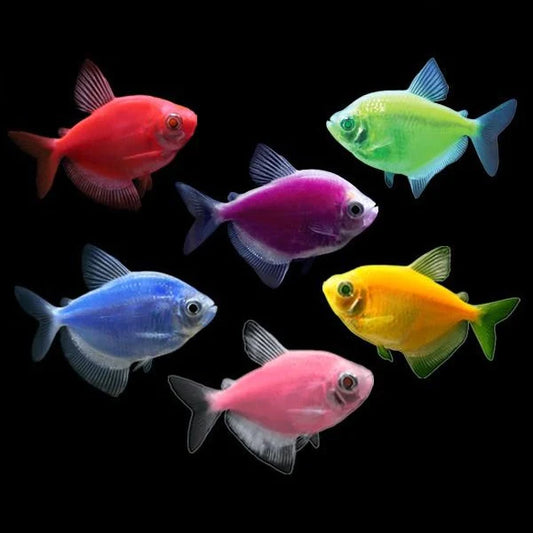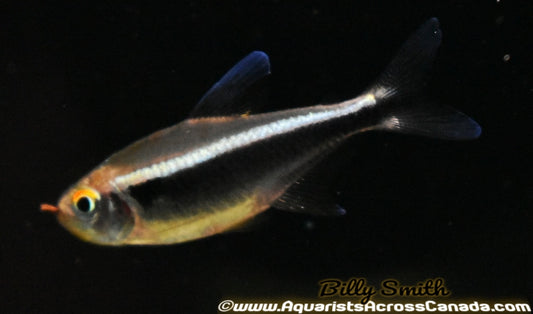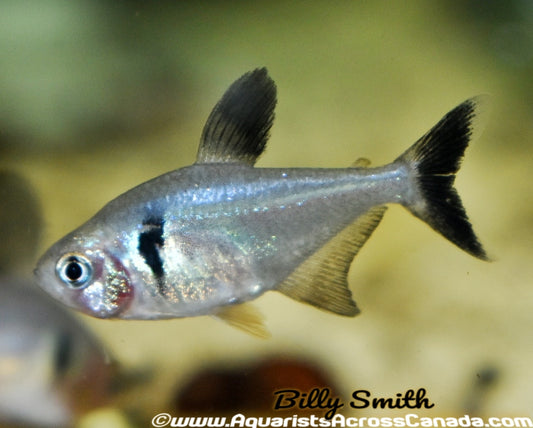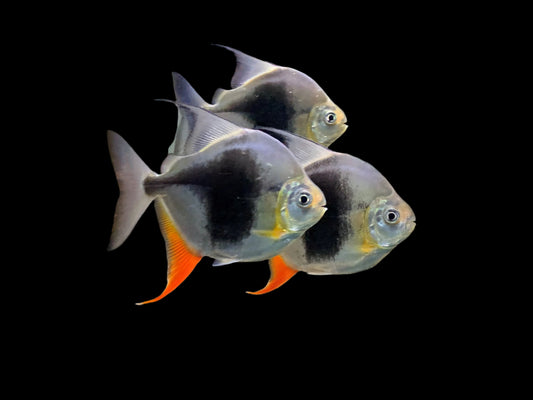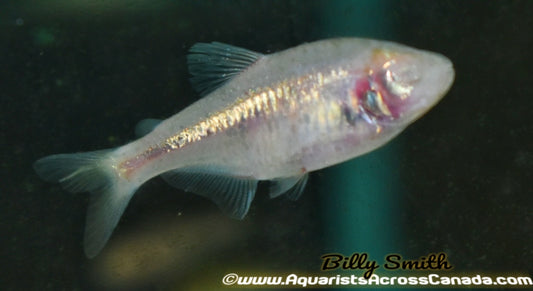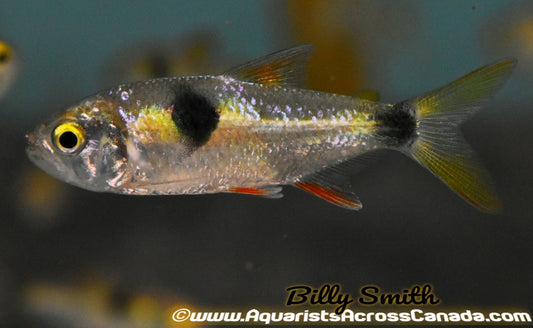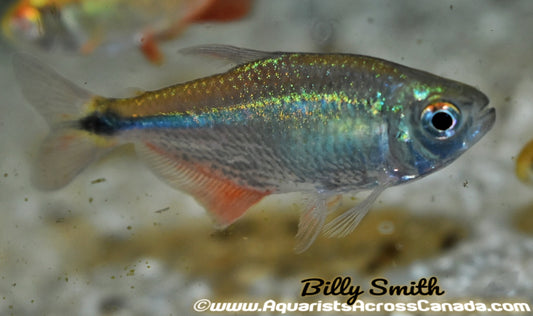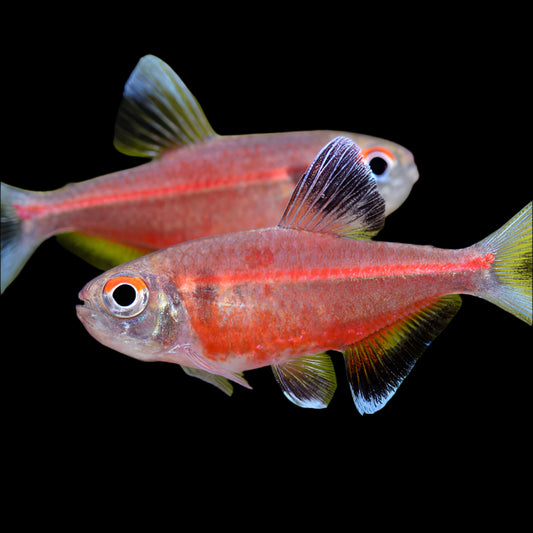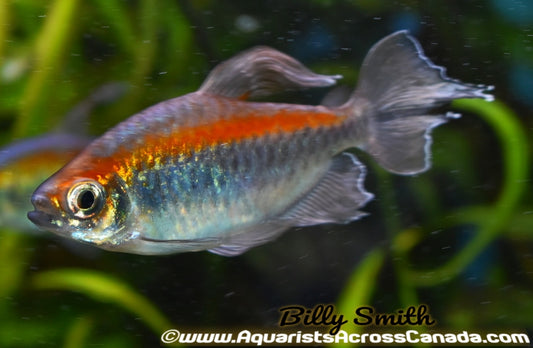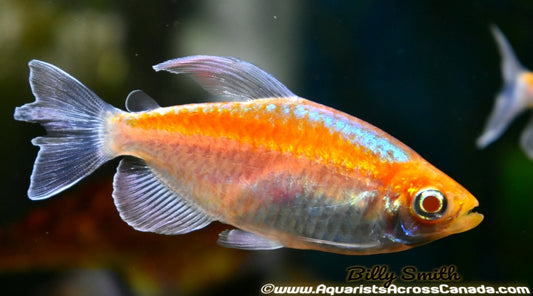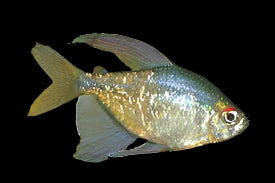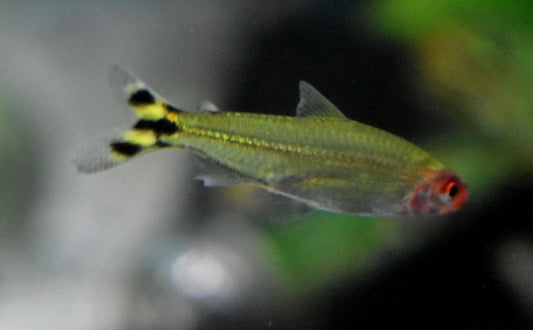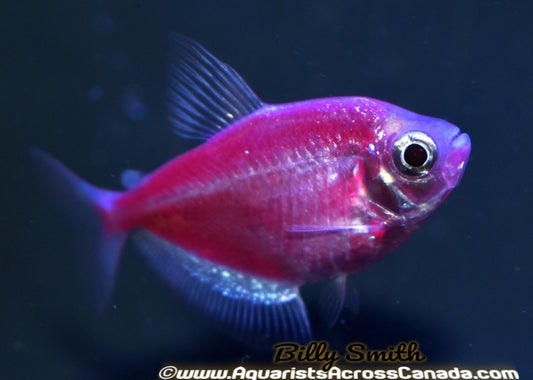Collection: Tetras
NOW WHEN YOU BUY MULTIPLES OF ANY SCHOOLING FISH A TIERED DISCOUNT IS APPLIED AUTOMATICALLY TO CART.
This applies only to fish purchased online, not in store.
Tetra is the common name of many small freshwater characiform fishes. Tetras come from Africa, Central America, and South America, belonging to the biological family Characidae and to its former subfamilies Alestidae (the "African tetras") and Lebiasinidae. The Characidae are distinguished from other fish by the presence of a small adipose fin between the dorsal and caudal fins. Many of these, such as the neon tetra (Paracheirodon innesi), are brightly colored and easy to keep in captivity. Consequently, they are extremely popular for home aquaria.
Tetra is no longer a taxonomic, phylogenetic term. It is short for Tetragonopterus, a genus name formerly applied to many of these fish, which is Greek for "square-finned" (literally, four-sided-wing).
Because of the popularity of tetras in the fishkeeping hobby, many unrelated fish are commonly known as tetras, including species from different families. Even vastly different fish may be called tetras. For example, payara (Hydrolycus scomberoides) is occasionally known as the "sabretooth tetra" or "vampire tetra".
Tetras generally have compressed (sometimes deep), fusiform bodies and are typically identifiable by their fins. They ordinarily possess a homocercal caudal fin (a twin-lobed, or forked, tail fin whose upper and lower lobes are of equal size) and a tall dorsal fin characterized by a short connection to the fish's body.[2] Additionally, tetras possess a long anal fin stretching from a position just posterior of the dorsal fin and ending on the ventral caudal peduncle, and a small, fleshy adipose fin located dorsally between the dorsal and caudal fins. This adipose fin represents the fourth unpaired fin on the fish (the four unpaired fins are the caudal fin, dorsal fin, anal fin, and adipose fin), lending to the name tetra, which is Greek for four. While this adipose fin is generally considered the distinguishing feature, some tetras (such as the emperor tetras, Nematobrycon palmeri) lack this appendage. Ichthyologists debate the function of the adipose fin, doubting its role in swimming due to its small size and lack of stiffening rays or spines.
-
ASSORTED GLOFISH (Gymnocorymbus ternetzi .var)
Regular price $11.24 CADRegular priceUnit price / per$14.99 CADSale price $11.24 CADSale -
BLACK BAR SILVER DOLLAR (Myleus Schomburgkii) 1.25"
Regular price $24.99 CADRegular priceUnit price / per -
BLACK NEON TETRA (Hyphessobrycon herbertaxelrodi) 2402
Regular price $3.99 CADRegular priceUnit price / per$4.99 CADSale price $3.99 CADSale -
BLACK PHANTOM TETRA (Hyphessobrycon megalopterus)
Regular price $3.74 CADRegular priceUnit price / per$4.99 CADSale price $3.74 CADSale -
BLACK SKIRT TETRA (Gymnocorymbus ternetzi)
Regular price $3.74 CADRegular priceUnit price / per$4.99 CADSale price $3.74 CADSale -
BLACKBERRY SILVER DOLLAR (Myleus .Sp Blackberry) RARE
Regular price $67.49 CADRegular priceUnit price / per$89.99 CADSale price $67.49 CADSale -
BLEEDING HEART TETRA (Hyphessobrycon erythrostigma)
Regular price $7.99 CADRegular priceUnit price / per -
BLIND CAVE TETRA (Astyanax mexicanus)
Regular price $4.99 CADRegular priceUnit price / per -
BLUE EMPEROR TETRA (Inpaichthys kerri)
Regular price $3.74 CADRegular priceUnit price / per$4.99 CADSale price $3.74 CADSale -
BLUE KING TETRA (Boehlkea fredcochui)
Regular price $3.99 CADRegular priceUnit price / per$4.99 CADSale price $3.99 CADSale -
BUCKTOOTH TETRA (Exodon paradoxus)
Regular price $14.99 CADRegular priceUnit price / per -
BUENOS AIRES TETRA (Hemigrammus caudovittatus)
Regular price $4.99 CADRegular priceUnit price / per -
CARDINAL TETRA (Paracheirodon axelrodi) 2402
Regular price $4.49 CADRegular priceUnit price / per$5.99 CADSale price $4.49 CADSold out -
COERULEAN TETRA (Hemigrammus Coeruleus "Rio Negra"
Regular price $14.99 CADRegular priceUnit price / per -
CONGO TETRA (Phenacogrammus interruptus) 2402
Regular price From $7.99 CADRegular priceUnit price / per$16.99 CADSale price From $7.99 CADSale -
CONGO TETRA ALBINO (Phenacogrammus interruptus Albino) LG
Regular price $14.99 CADRegular priceUnit price / per -
DIAMOND TETRA (Moenkhausia pittieri)
Regular price $5.99 CADRegular priceUnit price / per$7.99 CADSale price $5.99 CADSale -
EMBER TETRA (Hyphessobrycon amandae) 2402
Regular price $3.99 CADRegular priceUnit price / per$4.99 CADSale price $3.99 CADSale -
FALSE RUMMYNOSE TETRA *YELLOW* (Petitella georgiae)
Regular price $5.99 CADRegular priceUnit price / per -
FIRE ANT TETRA (Hyphessobrycon myrmex)
Regular price $14.99 CADRegular priceUnit price / per -
GLASS BLOODFIN TETRA (prionobrama filigera .var) 2405
Regular price $3.74 CADRegular priceUnit price / per$4.99 CADSale price $3.74 CADSale -
GLO COSMIC BLUE (Gymnocorymbus ternetzi .var) 2402
Regular price $11.99 CADRegular priceUnit price / per -
GLO ELECTRIC GREEN (Gymnocorymbus ternetzi .var) 2402
Regular price $11.99 CADRegular priceUnit price / per -
GLO GALACTIC PURPLE (Gymnocorymbus ternetzi .var) 2042
Regular price $11.99 CADRegular priceUnit price / per

